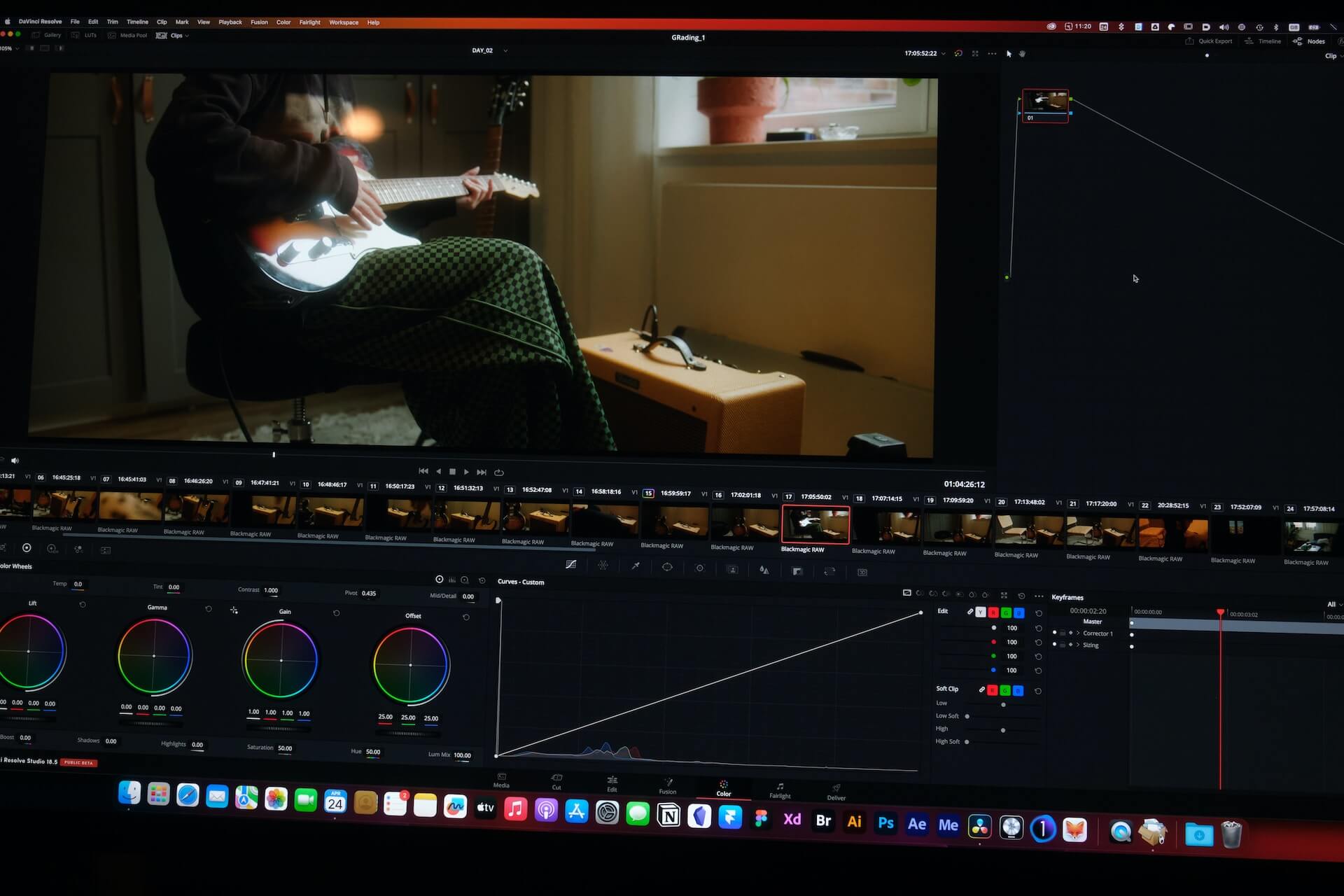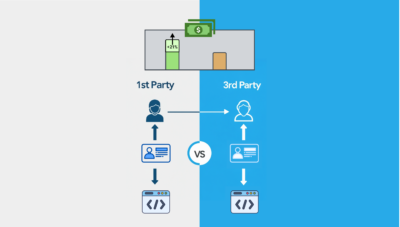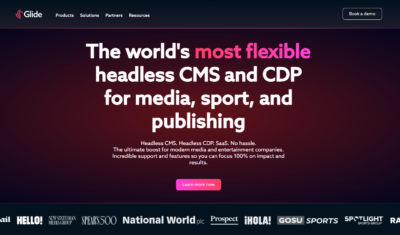Few publishers can afford to make videos as a purely artistic endeavor. Creating the best video content requires time, passion and commitment and needs to show a return on that effort.
And there’s very little reason that videos can’t provide a return on investment (RoI), given rising global demand for video content from both digital publishers and even brands.
The global audience for online videos is projected to grow by 700 million between 2019 and 2023. Additionally, more than half of internet users aged 16-64 say one of the primary reasons they go online is to watch video content.
At the same time, however, some publishers may struggle to extract adequate value from their video content — or may not have even started creating content — because they don’t know how best to sell their content online.
With this in mind, we’ve created a guide for those wanting monetization strategies that go above and beyond uploading to social media platforms and hoping the algorithms share their content. We’re going to look at how publishers with a video catalog can expand their audience reach and how publishers without a single video to their name can get an immediate leg up in the space.
Benefits of Selling Videos Online
Beyond the obvious advantage of using a video monetization platform — that is, creating an additional revenue stream from a single asset — there are several other key benefits.
- Video monetization platforms also allow publishers to reach new audiences all over the world, providing more opportunities for exposure and growth. The Humix Network, for example, consists of more than 30,000 independent websites.
- Publishers that sell their videos can experiment with different pricing options, including ad-based video on demand (AVOD), subscription-based video on demand (SVOD) and transactional video on demand (TVOD). Publishers can discover which model best suits their content and develop their content creation strategies with this in mind.
- Selling videos online allows publishers to control their audience building costs. Traditionally, reaching a larger audience would either require driving traffic towards a dedicated video page or building enough of a social media following to generate momentum. Video monetization platforms can help publishers generate revenue even as they build viewer numbers, potentially reducing marketing costs in the process.
- Popular video selling platforms offer a range of analytics to help publishers track engagement and gain valuable audience insights. It’s essential to understand what is and isn’t working for different audiences to be able to create content that captures and holds audience attention. Additionally, paring these platforms’ analytic suites with their larger audiences will quickly validate or debunk content strategies.
4 Types of Videos to Sell Online
Before exploring how to sell online videos, it’s important to first establish the difference between a video’s type and its niche. Type relates to a video’s structure and presentation, while niche concerns the subject matter of the video’s content.
This may seem like an obvious distinction, but it’s important to understand that many different niches can successfully use a single content type to reach new audiences. For example, news publishers are embracing TikTok to reach younger audiences.
With this in mind, let’s look at the most popular video types online to better understand how publishers can use these formats to expand their audience share and bolster revenue streams.
1. Instructional Videos
With the rise of DIY culture and self-education, instructional videos have exploded in popularity. These videos can cover a variety of subjects, from cooking to software tutorials, providing valuable insight on a topic and answering users’ frequently asked questions.
Instructional videos can be a great source of evergreen content, attracting views long after the video has been published. Take this instructional video on bow tie knots from eCommerce store Ties. It’s eight-years old, has racked up more than 1 million views in that time and is still Google’s featured snippet for that search request.

Publishers in almost any niche can make instruction video content that will have a long life after going live.
At the same time, it’s incredibly important that publishers are careful with quality control, as a poorly created instructional video can severely hurt a publisher’s image. Take tech publisher The Verge’s “How to Build a PC” article from 2018 contained a video so riddled with errors that it led to a widespread community backlash and had to be taken down.

Source: Ars Technica
2. Reviews/Previews
Prospective buyers are deeply interested in seeing a product or service in action before making a purchasing decision, with more than 90% of consumers wanting more video content from brands (PDF download).
Publishers can tap into this demand by teaming up with brands to review their content, helping potential customers develop a better idea of a product’s benefits.
Below we can see auto publisher Drive has used its video review of the Hyundai Ioniq 5 Dynamiq to complement its written review. The publisher is providing visitors with alternative ways of consuming content.

3. Entertainment Videos
Well-produced, entertaining videos are a proven way of connecting to and engaging with audiences and can take many forms. They might be comedy skits, short films, music videos or even documentaries.
Despite reports of Vice Media’s financial troubles, the publisher has made a name for itself over the past decade and a half for its creative and engaging video content. From cooking guides to short-form documentaries about Florida, Vice has been creating entertaining videos across multiple niches for years.

4. Educational
Online learning was already growing steadily pre-2020, but ever since the pandemic educational courses have exploded in popularity.
US-based open online course provider Coursera revealed in late 2021, for example, that total course enrollments had surged (PDF download) from 76 million in 2019 to 189 million in 2021.

Source: Coursera
The State of Digital Publishing (SODP) team, for example, has created an educational course focusing on Publisher SEO.

The course provides in-depth written modules that are accompanied by a video that delves into the learning objectives and general principles of each section.
Educational courses are a little different when it comes to monetization, with publishers more likely to sell the course on their website to build brand authority and reach their existing audience.
The flipside is that it can be more challenging to reach new audiences, although there are platforms that specialize in selling video courses — with Udemy, Skillshare and Coursera immediately springing to mind — that could serve as a solution.
How to Sell Videos Online in 2023
With a clearer idea on the different types of online videos publishers have the best chance of selling, let’s take a closer look at the steps they need to follow to succeed in this space.
- Step 1: Identify a Niche
- Step 2: Develop a Content Strategy
- Step 3: Create the Content
- Step 4: Choose a Video Monetization Platform
- Step 5. Optimize the Video
- Step 6: Analyze Video Performance
- Step 7: Promoting Videos
Step 1: Identify a Niche
This may sound obvious at first glance, but the first step for any publisher looking to sell video content online is to successfully identify their niche.
While most (if not all) publishers already have a niche, building revenue from video sales requires connecting with audiences as quickly as possible. By identifying and catering to as specific a niche as possible, publishers have a better chance of standing out from the crowd by simply reducing the number of competitors.
Advice on identifying niches often boils down to considering what unique skills and interests a publisher has, we don’t think this approach will cut it. The fact of the matter is that few publishers (if any) actually have unique skills. More or less time, money and expertise, however? Definitely.
Instead, we’d urge publishers to question whether their niche has either an interesting or underserved subgenre. This is a trial and error process, which even the largest YouTube channels will explain is essential to finding out what resonates with audiences.
Once they have a sense of their niche and subgenre the next step is to validate that assumption, for which we’d recommend doing some basic keyword research.
Keyword Research
While publishers may not want to use YouTube to distribute their content, the platform has the world’s largest audience of video viewers at more than 2.5 billion monthly active users. As such, using the platform’s autocomplete function can provide valuable insights into what interests users.

Using the autocomplete function is a simple and quick way to quickly build a list of relevant video ideas.
Step 2: Develop a Content Strategy
Audience Targeting
The next step is to start developing a video content strategy. In large part, this process is an extension of the research that began in the previous step.
This time the focus will be on building a clear audience profile — audience demographics (age, race and sex) as well as their interests, income and lifestyle. All successful content fulfills a need, which means publishers need to understand who their audience is and their interests.
Publishers that have already built print or podcast audiences are not necessarily guaranteed to be able to convert these to video.
Once the audience has been clearly identified the next step is to set some clear goals and key performance indicators (KPIs).
Goal Setting
This process is essential not only to understand what works in terms of content creation but also whether there’s an issue with a particular content distribution channel.
We’d suggest using the SMART methodology when developing goals and KPIs. SMART — which stands for specific, measurable, achievable, relevant and time-bound — is designed to help companies develop firm targets that deliver results.
Choose a Video Type
We’ve already given some examples of video types that publishers can monetize and it’s important to decide early on whether a content strategy will focus on a single type or a mix.
Remember that while a mix of video types will definitely appeal to a broader audience, without a sizable budget publishers will struggle to build strong audience connections quickly.
Plan For Consistency
Video production is a time-consuming process, but just as with any other media production process, publishing consistency is key to audience building. Without proper planning and resource allocation publishers are going to find it hard to consistently create and publish videos.
An infrequent publishing schedule will hamper efforts to build a loyal following, however, with audiences more likely to tune in elsewhere to satiate their demand for content. Before beginning the content creation process, ensure there’s a roadmap in place to be able to publish on a reliable basis.
Step 3: Create the Content
With the planning put to bed, it’s time to begin creating high-quality video content. Publishers with an existing content catalog definitely have a headstart to the content creation process, having already formed a specific style. However, there is still room for experimentation and growth for those with a content pipeline.
There’s a variety of online courses that can teach the ins and outs of videography, including lighting, composition, thumbnails and editing. We recommend starting there to both understand the basics of video production as well as hone existing skills.
The next step is equipment. While better equipment will generally yield more professional results, the rule of diminishing returns will set in after a certain point. That’s why we recommend starting off with a reasonable investment in equipment without breaking the bank.
Look for equipment that can last a while and upgrade components as and when it becomes obvious that existing equipment is a bottleneck. Also remember that there are a variety of apps that can help take professional looking videos on a smartphone. Check out this useful guide on the best video gear from Wired for an idea of where to start.
Moreover, a lack of video content no longer needs to be a barrier to entry to the monetization process.
The Humix Network, for example, allows non-video publishers to tap into the popularity of video content by opting in to display third-party videos on their website. We’ve written a detailed guide as to what Humix is, but at its core it’s a peer-to-peer video network. Publishers can use Humix to host their videos on their site and/or share them to other partner publisher websites and vice-versa.
There are several ways that Humix allows publishers to set up an embedded video unit directly within a page, with the Ezoic Chrome extension being the simplest way to do it. Publishers can also insert the video player from the Humix dashboard, though this process isn’t as visually immediate.

This means wait publishers that are getting to grips with their content pipeline can still begin displaying relevant content on their site and gather data to understand what has the biggest impact with their existing audiences.
Step 4: Choose a Video Monetization Platform
Picking the best video monetization platform relies on a number of factors, including cost, video player quality and available analytics.
YouTube has largely become the default free video hosting platform for most publishers and brands. The site’s impeccable infrastructure and billions’ strong audience make it a compelling choice for streaming videos. In terms of a monetization strategy, however, we couldn’t recommend relying solely on the video giant.
YouTube is a social media platform, which means success there relies heavily on its algorithm. We’ve written about our results from uploading video to both YouTube and Humix and were surprised at how much reach the latter provides for even niche topics.
Another major factor to consider when choosing a video platform is which monetization model that platform supports. These three models are:
- Ad-based video on demand (AVOD): Allows users to access video content for free, with the only requirement being to watch pre-, mid- or post-roll ads.
Example: Humix Network
- Subscription video on demand (SVOD): Gives users the option to pay a recurring fee for unlimited access to content.
Example: Brightcove
- Transactional video on demand (TVOD): Allows users to pay once to either own or rent a particular video.
Example: JW Player
Once a publisher has selected their desired platform then the usual steps of signing up, uploading videos and configuring the necessary settings all apply.
Step 5. Optimize the Video
As with written content, it’s important to consider basic search engine optimization (SEO) principles for videos when trying to boost its visibility.
Different platforms will have different options for writing and optimizing titles, descriptions, tags and transcripts, so check what SEO options are available and leverage them when possible.
The Humix Network not only gives publishers control over basics such as the title and description, but also allows them to add keywords to each video to help improve its SERP rankings.

Step 6: Analyze Video Performance
Despite having already talked about the importance of tracking video performance, we need to re-emphasize its importance here.
Having access to key video metrics will help guide future content strategy decisions and publishers need to know how to leverage this information.
As such, make sure that any prospective online video selling platform has a broad suite of performance. While the Humix Network provides at-a-glance snapshots of video performance from its dashboard, users can dive under the hood via Ezoic’s Big Data Analytics suite.

Understanding what performs well will help guide the content creation process and ensure monetizing future videos becomes easier.
Step 7: Post-Launch Promotion
It’s tempting to think that creating, uploading and optimizing high-quality videos is enough to guarantee success, but any monetization strategy should also include post-launch support.
We recommend publishers not only review the performance of their videos but also consider how to attract new viewers. We’ve already discussed using SEO practices to help rank higher in SERPs, but it’s important not to forget about content syndication or even social media marketing.
Improving video monetization using the SVOD or TVOD models is not as simple as with the AVOD model, which requires less financial commitment from the viewer. There’s a reason that YouTube is the biggest platform in the world.
Publishers need to pick a platform that will let them build new audiences across multiple different fronts. Ezoic’s Humix Network is a perfect example of this, offering its users the ability to share their videos across a broad peer-to-peer network of publishers without cannibalizing traffic to the original creator’s website or YouTube channel.
Final Thoughts
Developing a comprehensive video monetization strategy can be a daunting prospect for newcomers and established creators alike.
While nailing the content creation process is key, it’s not enough to make high-quality content and hope that audiences will want to buy it or be willing to sit through ads for it. Publishers need to understand the importance of consistently publishing great content as well as marketing it to new audiences.
With that said, however, the rewards for those that follow the steps laid out above can be significant. Don’t fall into the trap of thinking that there’s only one way to build audiences and sell video online, as the rise of new video monetization platforms has shaken up the landscape.
Publishers that are agile and disciplined will be able to diversify and expand their video revenue streams.






